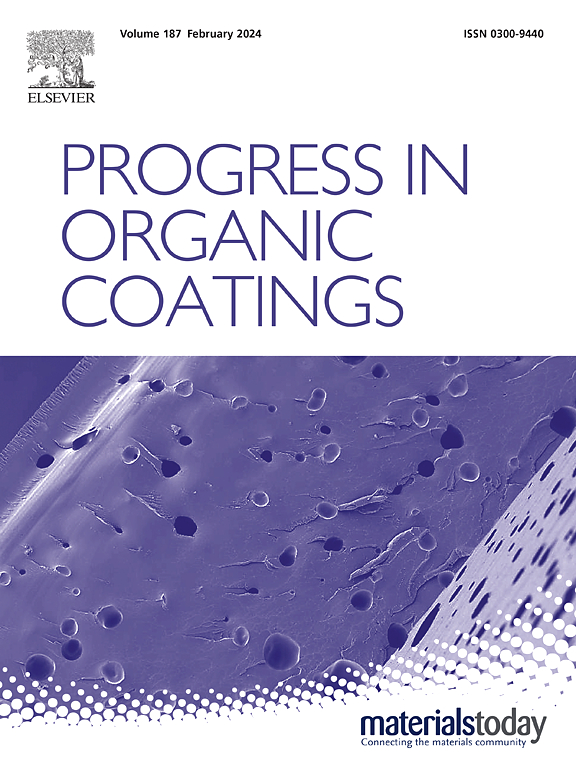Effectiveness of novel amphiphilic co-network coatings in marine antifouling applications and the dynamic succession of early microbial communities on surfaces
IF 6.5
2区 材料科学
Q1 CHEMISTRY, APPLIED
引用次数: 0
Abstract
Marine biofouling causes significant damage to shipping, emphasizing the importance of developing non-toxic and effective antifouling coating. In this study, hydrophilic chains capped with MPTMS were successfully synthesized via radical polymerization and addition reactions. The subsequent condensation reactions between silanols and PDMS formed a silicone-based amphiphilic co-network coating (P-PDM-x). The chemically heterogeneous structure formed through covalent bonding can be the surface reconstitute in the water, forming a special micro/nanodomain structure to reduce the entropy-enthalpy driving force in the adsorption process of marine organisms, thus giving the coating excellent antifouling performance. Moreover, the coating has good adhesion and impact resistance to ensure stable use in marine environments. Compared to PDMS, P-PDM-15 effectively reduced the adhesion of bacteria and algae, with anti-adhesion rates of 86.00 % for B. subtilis, 97.99 % for P. ruthenica, and 99.39 % for P. tricornutum. Furthermore, P-PDM-15 demonstrated excellent resistance to fouling over a four-month period in the marine field test. To better understand the process of early succession of microbial communities on amphiphilic coated surfaces, high-throughput sequencing analyses revealed a distinct spatio-temporal structure and dynamics of community succession on the P-PDM-15 surface. The diversity showed a decreasing and then increasing trend, potentially due to competition among communities or the intermediate disturbance hypothesis. This study introduces a novel approach to synthesise amphiphilic anti-fouling coatings with improved efficiency, using high-throughput sequencing analysis to investigate the intricate interaction between these coatings and biofilms, which is expected to promote the development of marine anti-fouling coatings.

求助全文
约1分钟内获得全文
求助全文
来源期刊

Progress in Organic Coatings
工程技术-材料科学:膜
CiteScore
11.40
自引率
15.20%
发文量
577
审稿时长
48 days
期刊介绍:
The aim of this international journal is to analyse and publicise the progress and current state of knowledge in the field of organic coatings and related materials. The Editors and the Editorial Board members will solicit both review and research papers from academic and industrial scientists who are actively engaged in research and development or, in the case of review papers, have extensive experience in the subject to be reviewed. Unsolicited manuscripts will be accepted if they meet the journal''s requirements. The journal publishes papers dealing with such subjects as:
• Chemical, physical and technological properties of organic coatings and related materials
• Problems and methods of preparation, manufacture and application of these materials
• Performance, testing and analysis.
 求助内容:
求助内容: 应助结果提醒方式:
应助结果提醒方式:


